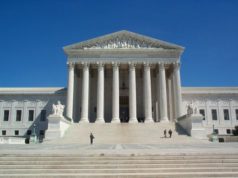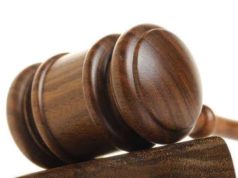
The Supreme Court Flag Burning: The Controversial Issue
Flag burning has long been a contentious issue in America, with many holding deeply-held beliefs and emotions surrounding the act. The Supreme Court flag burning case was a landmark decision that brought the issue to the forefront of American national discussion. The case, Texas v. Johnson, ruled that flag burning is considered protected speech under the First Amendment of the US Constitution. The decision sparked controversy, leading to political and social upheaval, and the heated debate surrounding the issue continues even today.
To fully understand the Supreme Court flag burning case, it is important to first look at the history of flag burning in America. The act of burning the American flag can be traced back to the colonial era when British flags were burned as symbols of protest against the British Crown. During the Civil War, Confederate flags were also burned as a way of showing opposition to secessionist movements. It wasn’t until the late 19th century when the American flag itself became a common symbol of protest.
In the early 1900s, laws began to be passed by various states to prohibit flag desecration. These laws were often associated with the rise of nationalism and a belief that the flag represented the ultimate expression of patriotic loyalty to the nation. However, it wasn’t until the Vietnam War that flag burning became more mainstream as a form of protest. The act was an expression of anti-war sentiment, and it was often seen at rallies and protests aimed at ending US involvement in the war.
In 1968, the federal government passed the Flag Protection Act, which made it illegal to knowingly desecrate the American flag. The law was challenged and overturned by the Supreme Court in 1971 in the case of Street v. New York. The Court held that the First Amendment protected political expression, even if it was offensive to some. However, this did not put an end to the controversy over flag burning, as laws and proposed constitutional amendments to prohibit it continued to be debated.
It wasn’t until 1984 when Gregory Lee Johnson, a member of the Revolutionary Communist Youth Brigade, burned an American flag at the 1984 Republican National Convention in Dallas, Texas, that the issue would be brought before the Supreme Court once again. Johnson was arrested and charged with violating the Texas flag desecration law, which made it a crime to “intentionally or knowingly desecrate a national flag.” He was convicted and sentenced to a year in prison and fined $2,000.
Johnson’s case then moved up the legal system as the Texas Court of Criminal Appeals overturned his conviction, holding that burning the flag was a form of “symbolic speech” protected by the First Amendment. Texas appealed to the Supreme Court, which heard oral arguments on the case in 1989. The central issue was whether Johnson’s conduct was expressive conduct that the First Amendment protects.
In a 5-4 decision, the Court held that Johnson’s act of burning the flag was expressive conduct that was protected by the First Amendment. Writing for the majority, Justice William J. Brennan Jr. stated that “if there is a bedrock principle underlying the First Amendment, it is that the government may not prohibit the expression of an idea simply because society finds the idea offensive or disagreeable.” The Court held that Texas’ flag desecration law was a content-based restriction on expression and thus was unconstitutional.
This decision was met with heated criticism from many who believed that burning the American flag was a direct attack on American values and showed a lack of respect for the country and its symbols. President George H. W. Bush called for a constitutional amendment to ban flag desecration, and several states passed their own laws in defiance of the Court’s ruling. Protests and counter-protests erupted across the country, with many burning flags as a form of expression and others burning them in protest.
The issue would continue to be debated in the years to come, with Congress introducing several constitutional amendments aimed at prohibiting flag burning. A constitutional amendment would require a two-thirds vote in both the House of Representatives and the Senate, as well as approval by three-fourths of state legislatures. None of these amendments ever passed.
In 2006, Congress passed the Flag Protection Act of 2005, which made it a crime to damage or destroy an American flag if the act was done with the intent to incite or produce imminent violence or a breach of the peace. This law was also challenged in the Supreme Court in the case of United States v. Eichman, where the Court held once again that flag burning is protected by the First Amendment.
The Supreme Court flag burning case continues to be a controversial issue in American society. Those who support the practice argue that burning the flag is a legitimate form of protest that should be protected under the First Amendment. They argue that the flag is a symbol of the country and that protesting against actions taken by the government is an expression of patriotism. On the other hand, opponents of flag burning view the act as a direct attack on American values and argue that it is disrespectful to those who have fought and died for the country.
It is also worth noting that the Supreme Court flag burning case is not the only case dealing with the flag in American history. In 1943, the Supreme Court ruled that Jehovah’s Witnesses were protected under the First Amendment when they refused to salute the flag for religious reasons. In 2000, the Court upheld a Texas law that required public school students to recite the Pledge of Allegiance.
In conclusion, the Supreme Court flag burning case was a pivotal moment in American history and sparked a heated national debate over the issue of free speech and expression. While the Court ultimately held that burning the flag is protected under the First Amendment, the controversy surrounding the act continues to this day. The case serves as a reminder of the importance of protecting the rights of all individuals, even when they express views that may be unpopular or divisive.
The Flag Desecration Amendment, also known as the Flag Burning Amendment, is a very controversial Amendment allowed under the Constitution. This Amendment states that the United States Congress has to allow the expression of political views even if it is through the burning of the United States Flag. Of course one can see the disapproval of such an Amendment by members of the Government.
Many argue that this allowance is a violation of the United States’ national symbol, while others enforce that this is just a measure of free speech. This issue still provokes a controversial debate over the national symbol, a person’s free speech, and protecting the liberty associated with the national symbol. This Amendment passed by the House of Representatives states that Congress has no power to restrict the desecration of the United States Flag. This Amendment was first applied with the intent of giving power to Congress to criminalize any flag burning activity in a public protest. Those who agree with the content of this Amendment think that giving the Congress such power to restrict flag desecration ultimately limits a person’s freedom of speech.
They also point out the rarity of flag desecration in the United States. Opponents to the Amendment state that making such action illegal would ruin the very principle upon which America bases itself. Other arguments point out that certain groups, such as the Boys Scouts of America and the American Legion, usually participate in flag burning as a measure of a respectful manner of disposal. According to the view of opponents of the Amendment would discriminate against those who committed the same acts with different intentions.
Those individuals that proposed the argument of flag burning being a violation of the law state that laws against flag burning are needed to protect the simple important nature of the flag. With the United States flag being considered as the most relevant symbol of the U.S., many believe that burning the flag is a direct offense to the beliefs and practices if the U.S. Government. Proponents to flag desecration argue that the action is not an intellectual one, but identified as being rather inarticulate. People against flag burning feel it is an offensive act that needs to be outlawed.
In accordance with the long controversial battle over the actions of flag burning, below are a series of Acts implemented over the years identifying the issues regarding flag burning.
● Federal Flag Desecration Law 1968- This law was passed in response to a protest held in Central Park where a peace activist burned the flag in protest of the Vietnam War. The law banned this display against the American flag.
● Supreme Court Rules Against Laws Banning “Contempt” of Flag (1972)- After a teenager was arrested for wearing a patch of the American flag on the seat of his pants, the Supreme Court ruled that laws that banned contempt in a vague manner were unconstitutional and violated the First Amendment.
● The Supreme Court strikes down all laws banning flag desecration (1989)- In a 1984 Republican Convention, Gregory Lee burned the flag in protest to President Reagan’s policies and was arrested under the Texas flag desecration statute. In a Court ruling after his arrest, the Supreme Court removed the flag desecration law from 48 states.


























